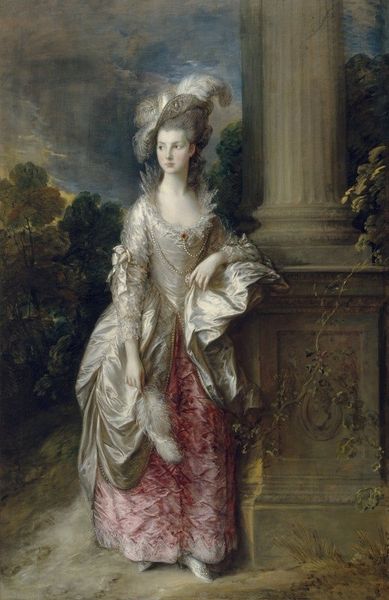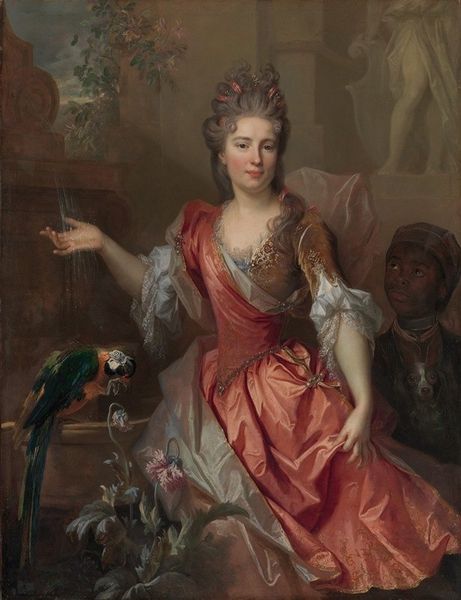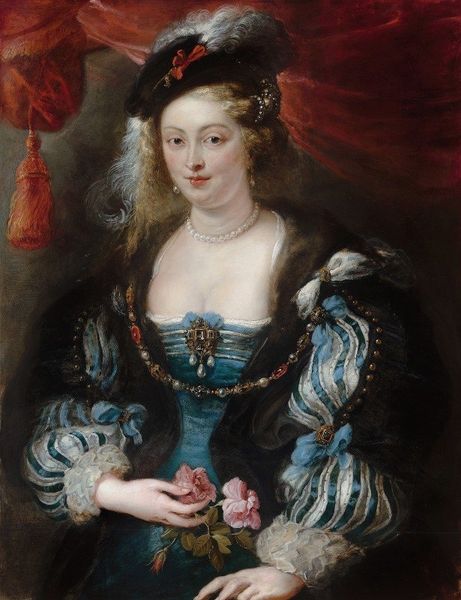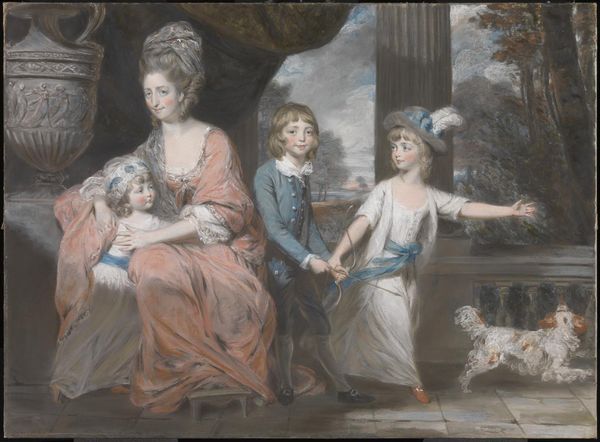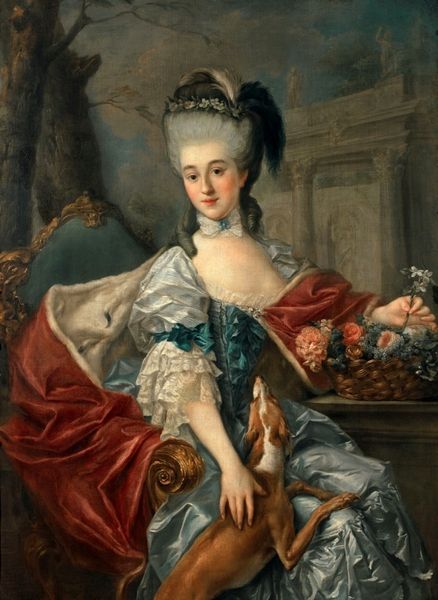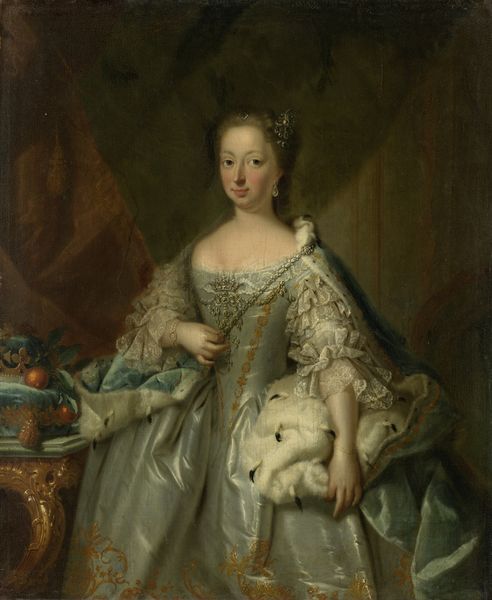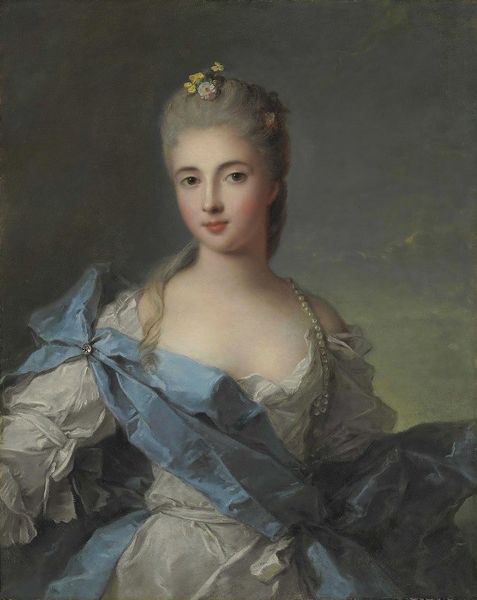
painting, oil-paint
#
gouache
#
figurative
#
allegory
#
painting
#
oil-paint
#
oil painting
#
history-painting
#
portrait art
#
rococo
Copyright: Public Domain: Artvee
Editor: Here we have a portrait of Elisabeth-Charlotte de Bavière, the Princess Palatine, painted by Jean-François de Troy. What strikes me is the rather theatrical composition—she's posed almost like an actress on a stage. How do you interpret this work? Curator: Ah, yes, "the Princess Palatine," a firecracker of a woman, trapped in the gilded cage of the French court! Forget stiff formality; De Troy seems determined to catch her wit, her spark. Those cherubs aren't just decorative; they're lifting that floral basket as if it holds her many accomplishments, perhaps a comment on her intellectual prowess. See how that cheeky dog almost mirrors her regal pose? I imagine the scene exploding in joyful, yet controlled chaos, almost daring you to challenge her! Doesn't the landscape seem less important than all of these symbolic details? What story might it be trying to convey to us? Editor: So, the landscape serves more as a backdrop for a display of symbolic details and the subject's personality. I hadn't considered the dog mimicking her stance—a playful jab at royalty? Curator: Exactly! It’s almost like de Troy winked at us through the centuries. Do you see other surprising symbols in the composition? This is precisely what makes Rococo painting so appealing; we're invited to read, decode, and ultimately, *feel* a personal connection to the princess. Editor: The bow and arrow could indicate that she is a strong huntress as well? Thank you for pointing out those interesting clues! I will be forever more attuned to dogs and children acting as cheeky mimics! Curator: That's wonderful, that's the true joy of art.
Comments
No comments
Be the first to comment and join the conversation on the ultimate creative platform.




